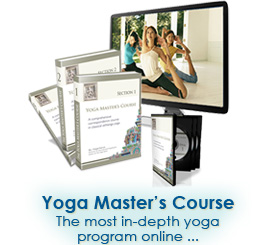[ Excerpt from The Science of Yoga, page 480 ]
A form of positive sense control occurs when we consciously place the attention of our senses upon that which is uplifting, spiritually nurturing and sattvic in nature, such as listening to bhajans (devotional songs), filling the room with burning incense, attending satsanga, spiritual gatherings or religious festivals at a temple or other holy site, enjoying prasad (holy food offering), etc.
The very principle of pratyahara lies upon the fact that we do have the ability to limit or influence our sensory input. We can easily observe this fact in our daily lives. For instance, the clock on the wall may be ticking all day, but we may, at certain times not hear it when our attention is turned elsewhere. Although the ticking sound vibrations are constantly striking the ear, our mind is not joined to the organ of hearing as far as those particular vibrations are concerned.
As well, when travelling down the road in a car, the eyes are bombarded with hundreds of objects, yet we 'register' only a fraction of them within our brain. Inputs from innumerable objects in our external world are constantly invading our sense organs, yet our attention remains limited to a mere few at a time, the bulk of the rest going unnoticed.
But still, this form of pratyahara remains an involuntary form, such as when one may become engrossed in a book, and hence be unaware of any activity or sounds around them.
In these cases, although sensory isolation is attained, it happens unconsciously and there is still something within the external world upon which the mind is concentrated. In pratyahara, the withdrawal is intentional and completely voluntary, while the mind has no object of attraction in the external world.
In raja yoga, the yogi endeavours to completely shut out this external world so that he/she will have his/her mind alone to deal with -- that is to say, all the mental conditionings within the subconscious, memories of the past and fantasies which constantly occupy its field -- mastery of which occurs in the ensuing stages of dharana and dhyana. Pratyahara then, establishes a shutter of sorts between the sense organs and the mind, isolating the mind from the external world.
Thus we can understand that the senses themselves are merely a part of the lower mind. As I.K. Taimni succinctly puts it in his book, The Science of Yoga:
"They [the senses] are, as it were, the outposts of the mind in the external world and should follow the lead of the mind. When the mind wants to put itself in touch with the external world, they should begin to function. When it decides to withdraw, they should be able to withdraw with it, thus breaking all connection with the outer world."
[Continued...]
---------------------
NOTE: This yoga article is an excerpt from The Science of Yoga, an online yoga training program with streaming yoga videos and 600 pages of step-by-step yoga instruction.

"The Science of Yoga is a course worthy of
leather binding and an honored place in the
finest libraries in the world
... It is indeed a masterful work."
Dr. John Michael Christian
AwakeningWithYoga.com
Learn More About
The Science of Yoga Course
|






